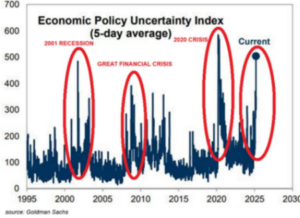Though both are defined-contribution plans, there are some crucial differences
RETIREMENT PLANS OFFER GREAT BENEFITS, BUT THEY’RE NOT ALL CREATED EQUAL
Opher Ganal – 8/24/2022
Unless you plan to work forever, you need to plan for retirement.
Then, you need to execute that plan.
Our parents’ and grandparents’ generations had a simpler time with that, until the 401(k) showed up. Since then, things for us are nowhere as simple, easy, or risk-free.
How Employers Shifted Market Risk from Their Pensions to You
Until the 1980s, most employees could count on “defined-benefit” (DB) pensions. That all changed with the advent of the 401(k) and other “defined-contribution” (DC) plans, created by a 1978 legislation.
In DB plans, it was up to the employer to figure out how many years employees would collect pension payments, how high those payments would be (based on years of service and last salary), and how to invest to generate those payments.
Retirees’ payments would start showing up on time, in the correct amounts, guaranteed for life, with zero market risk.
The differences between these and DC plans are simple, but profound.
In a DC plan, the only things you control are how much you contribute to the plan each year (within IRS limits), which investment options (from those your employer picked for the plan) you invest in, and when you want to retire.
How much you get once you retire depends entirely on how much you chose to contribute, and how well your chosen investments performed over the years and decades.
This shifted all market risk from your employer to you (though on the flip side, if you’re lucky enough to have a record bull market juice your returns, you reap the full benefit).
Whereas in DB plans you don’t have to do much to set up your monthly payments, in a DC plan, once you retire, you need to either transfer your funds to an annuity, or create your own periodic payment stream by deciding what investments to sell, how much, and when.
The Main Types of Defined-Contribution Plans
The two most common DC plans are the 401(k) and the 403(b).
A third plan type, the 457(b), is far more rare.
Who May Offer Each Plan Type?
According to Marianne M Nolte, CFP®, Imagine Financial Services, “A 401(k) is established by a for-profit entity and a 403(b) is offered by a government, state, or non-profit organization.”
The IRS says of 457(b) plan sponsors, “The organization must be a state or local government or a tax-exempt organization under IRC 501(c),” which is very similar to the 403(b).
What Are the Important Differences Between the 401(k) and the 403(b)?
While both are DC plans, there are some crucial differences you should know.
Nolte says, “The type of holdings allowed varies from 401(k) to 403(b). An investor can hold mutual funds and annuities in their 403(b). Within a 401(k), investors may have a more diverse selection of investments including low-cost ETFs.”
Next, she points out that while loan provisions and post-tax-contribution Roth options are allowed for both, they’re not equally implemented, “403(b) plans generally have loan provisions, but not all 401(k) plans make this available to employees. Conversely, many 401(k) plans offer a Roth element, but this isn’t as widely available in 403(b) plans. Loans and Roth elements are up to the discretion of the plan designer and administrator.”
Grant R. Maddox, CFP®, AWMA®, CSRIC®, Hampton Park Financial Planning adds, “Many employees don’t know there are both pre-tax and post-tax (Roth) options for many DC plans. The ability to choose between saving on taxes now or in the future is a beautiful addition for many savers. Furthermore, a Roth can be an excellent area for tax-free growth over their earning years for young savers with longer time horizons. Lastly, while the maximum employer contribution for 401(k)s in 2022 is $20,500, those over 50 and still working are eligible for a catch-up contribution to either a Roth (post-tax) or traditional 401(k) of $6,500 per year,” (more on these contribution limits below).
Ayad Amary, MBA, CFP®, VP and Senior Wealth Advisor at Wealthcare of the Lehigh Valley adds an important difference, “Most 403(b) plans are held with insurance companies and therefore they typically offer a lifetime annuity income feature within the plan. Like a traditional pension plan, this option allows a participant to convert some or all of their retirement plan balance to a stream of guaranteed payments for ‘lifetime income.’ This may be appealing to some participants but whether it is an advantage over 401(k) plans will depend on your individual circumstances.”
Can You “Double-Dip” Across Plans to Get Around Contribution Limits?
If you’re frugal enough relative to your income, making large contributions to your tax-advantaged contributions can let you build a large-enough nest egg for a truly comfortable retirement.
Unfortunately, the IRS limits how much you can set aside in such plans. Specifically, in 2022, 401(k) and 403(b) contributions are limited to $20,500. If you’re 50 or older, the IRS allows a catch-up provision of another $6500 a year, for a total of $27,000 (note that your employer is allowed to contribute above and beyond your limits, but that’s beyond the scope of this article).
Even if you work for two employers, you can’t double up those limits.
Whether you participate in two 401(k) plans, two 403(b) plans, or one of each, your aggregate contribution is limited to those above-mentioned amounts.
Further, as Maddox mentioned above, this applies even if one plan is a Roth and the other isn’t.
However…
Maddox points out a little-known aspect of the 403(b) plan that lets you increase your contributions above that, “Unlike the 401(k), the 403(b) has more catch-up provisions (if your specific plan allows it) beyond the catchup of $6500 in 2022 for those over 50. If you’ve worked for the same eligible organization for 15 years or more, you may be eligible to contribute an additional $3,000 a year with a lifetime limit of $15,000. This strategy, combined with potential Public Service Student Loan Forgiveness programs, can be a tremendous additional planning area for those working for qualified organizations.”
If you’re lucky enough, your employer may offer both a 403(b) and a 457(b), like my former employer, the University of Maryland. In this scenario, you can indeed double-dip (or even more)!
Maddox spells it out, “If your organization offers both a 403(b) and a 457(b), you are in the enviable situation where you can contribute up to the traditional limit of $20,500 (or $27,000) to each plan! That’s a potential deferral of up to $54,000 a year. Incredible!
“Furthermore, if your plan allows it, you may also have the incredibly unusual advantage of the 457(b) three-year catch-up provision. Beyond the $6500 age-based catchup and the $3000 years-of-service-based catchup, they often allow participants to defer additional funds in the three years before you reach the plan’s normal retirement age.
“Limited to twice the annual 457(b) limit of $20,500 in 2022, or the annual 457(b) limit plus amounts allowed in prior years that you didn’t contribute. For example, if you’re eligible for a 403(b) and 457(b) three-year catch-up provision over the age of 50, you could be eligible to contribute $27,000 ($20,500+$6,500) plus $41,000 ($20,500×2) to your 457(b) for a total of $68,000!”
How’s that for maxing things out?!
The Bottom Line
The advent of DC plans in the 1980s was the death knell for most traditional DB pension plans, shifting market risks from employers to employees like you.
DC plans, such as the 401(k), 403(b), and 457(b), let you make tax-advantaged contributions up to IRS-determined limits, and invest them within the options offered by each plan. If you choose wisely and are lucky enough, you may end up a 401(k)- or 403(b)-millionaire!
According to 401k Specialist Mag, Fidelity Investments reported, “…its 401k platform had 442,000 millionaires (those with account balances of at least $1 million) as of the end of 2021… when it comes to 403b millionaires, Fidelity has 87,000 as of the end of 2021.”
That’s 529,000 retirement-plan millionaires just at Fidelity!
According to Pionline, Fidelity Investments holds about a third of the DC market. Scaling by that factor, there are about 1.6 million American retirement-plan millionaires. That’s about 1 percent of the ~163.5 million American employees, according to the Bureau of Labor Statistics (BLS). With about 25 percent of employees over age 55, we can estimate that about 4 percent of workers within a dozen years of the official full retirement age are now retirement-plan millionaires.
The details in the above article may help you join their ranks.
Disclaimer
This article is intended for informational purposes only, and should not be considered financial, investment, business, tax, or legal advice. You should consult a relevant professional before making any major decisions.
About the Author
Opher Ganel has set up several successful small businesses, including a consulting practice supporting NASA and government contractors. His most recent venture is a financial strategy service for independent professionals. You can connect with him there, or by following his Medium publication, Financial Strategy.



